This study aimed to review the significance of the theory of physical education learning, its trends in research, and recent practice efforts in the schools, and to examine future problems in the theory of physical education research, by referring to the limited books, theses and discourses, and practice reports available.
Research on the theory of physical education attracted attention after it was introduced as a part of physical education classes in 1947, and the results of certain research and practices were announced. It was established to guarantee the opportunities to acquire knowledge about human development through physical education activities and sports and to understand the purpose and history of physical education in physical education classes. Thereafter, the view regarding the physical education class concerning practical skill centrism became dominant, necessitated by the content that was useful for practical skills. Therefore, the theory of physical education stagnated. In 2008, the importance of the theory of physical education, resulting from sports sciences studies, was explained in the curriculum guideline to guarantee the sustainable challenge of lifelong sports education, and it was made compulsory at that time. However, the theory of physical education research, including practice reports in the school field, has not advanced much since then, and this stagnation is likely to continue. Nevertheless, research was gradually accumulating for the next revised year (2018).
Future issues include the initiative proposals to qualitatively enhance teacher training courses, such as the introduction of subjects on lesson making of theory of physical education in teacher training courses in health and physical education departments, further development of practical research in school settings and the repository of examples, and the need for discussion and examination regarding curriculum research in physical education learning. Furthermore, researchers and teachers need to ask and answer what should be taught under the subject of physical education?
View full abstract
